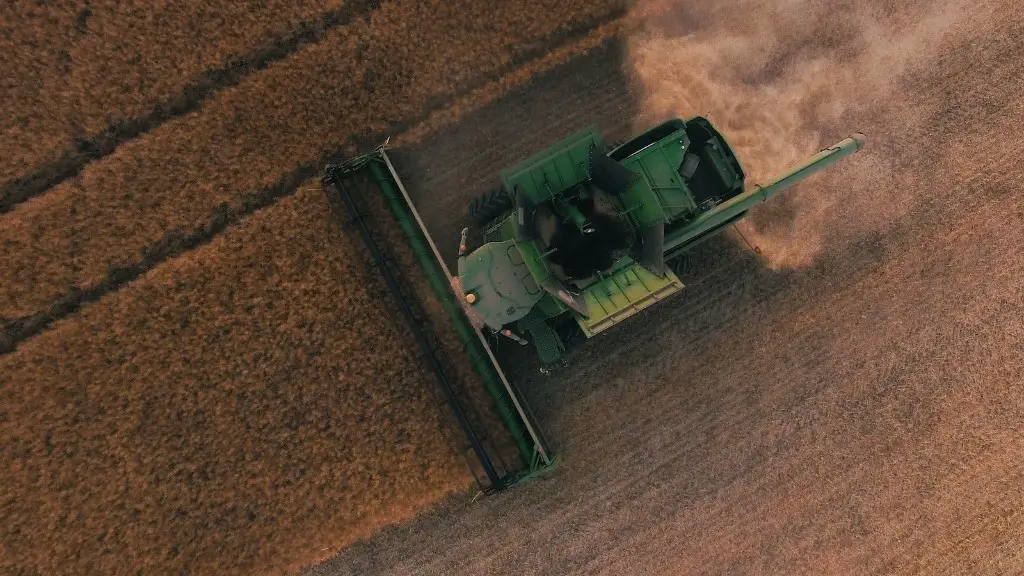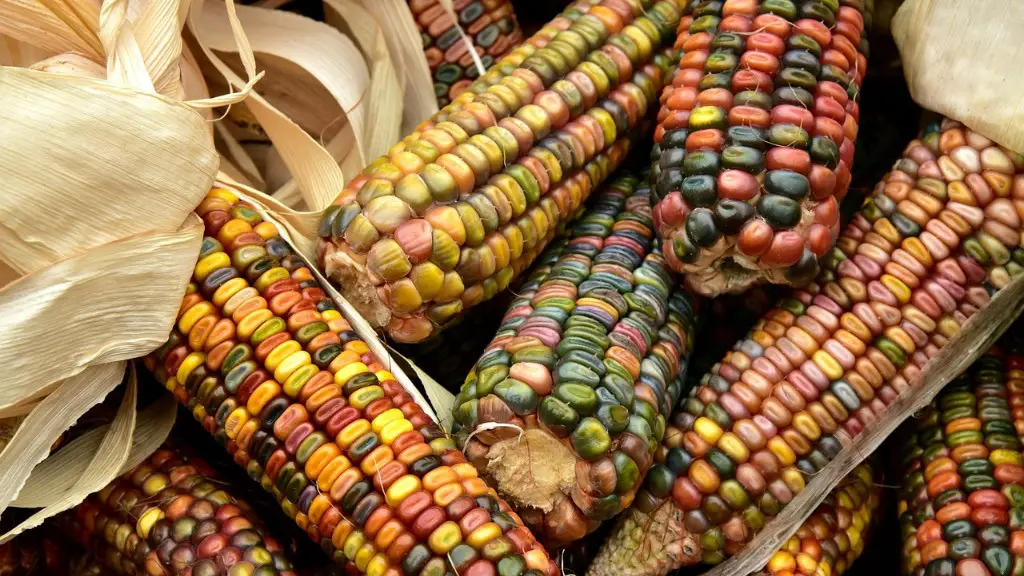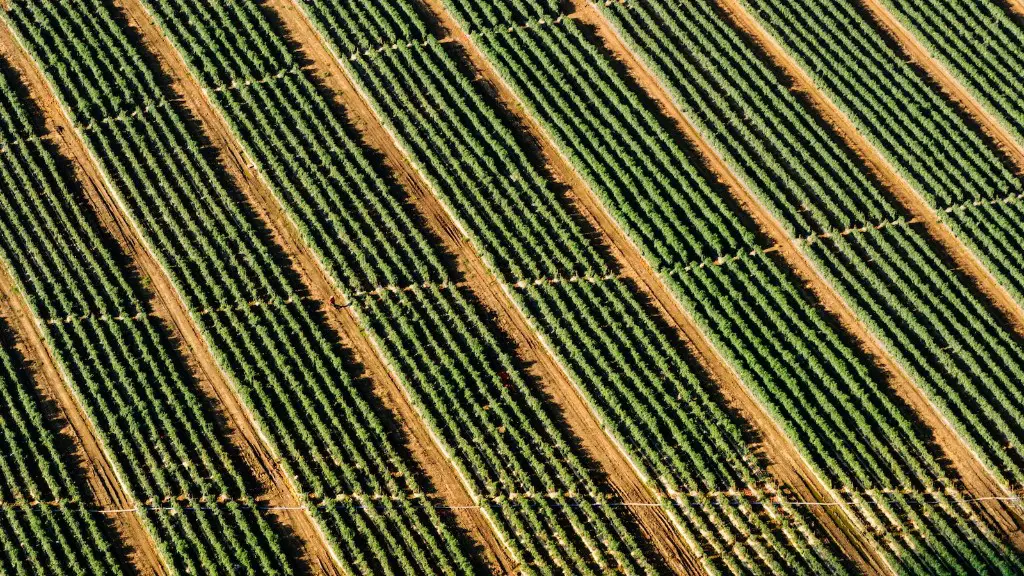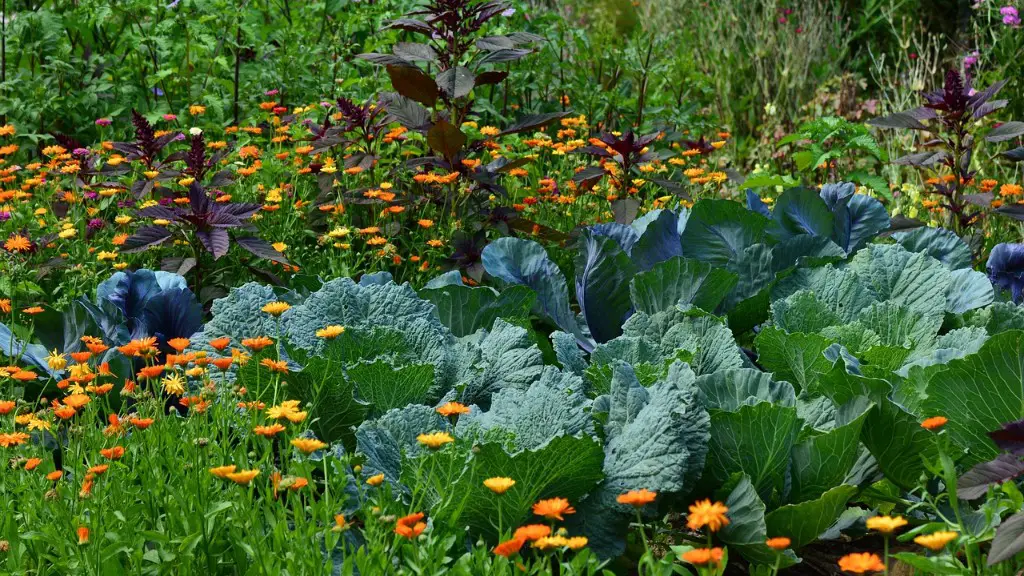Agriculture is a type of activity that has been practiced by some humans since the dawn of civilization. It is an important factor in the history of mankind and is essential for the livelihoods of many communities. The origins of agriculture are unknown and are thought to have developed over thousands of years, beginning with the domestication of wild plants and animals and culminating in the development of complex agro-ecological systems and the production of goods. While its origin remains a mystery, the earliest evidence of agriculture points to its development in the Fertile Crescent region in the Middle East.
Archaeological evidence suggests that humans first began to practice agriculture in the Fertile Crescent, a triangular region that extends from Anatolia and the Turkish-Syrian border in the east to the Nile Valley in the south and the Caucasus Mountains in the north. This area was home to several ancient civilizations, including Sumeria, Babylonia and Assyria. In the Fertile Crescent, humans practiced an early form of agriculture known as ‘dry farming’. This type of farming was done without irrigation and mainly relied on the seasonal monsoons that would bring necessary moisture to the land.
Archaeological evidence suggests that people in the Fertile Crescent began harvesting wheat, barley and peas around 9000 BCE. These crops were capable of yielding high amounts of food and were successful enough for the populations that used them to begin settling in the area. As such, the Fertile Crescent is commonly considered to be the birthplace of agriculture.
The Fertile Crescent began to spread its influence further over the course of the Neolithic period, resulting in the emergence of agriculture around the world. By 6000 BCE, agriculture had spread throughout Europe, and by 4000 BCE, it had spread to India. By 3000 BCE, agriculture had spread to China and by 2000 BCE, it had spread across Mesoamerica and the Caribbean.
The spread of agriculture was made possible by the development of techniques such as irrigation, domestication of animals and the use of draft animals for ploughing. It was also aided by the development of tools such as ploughs, hoes, sickles and grinding stones. In the process of spreading, agriculture began to transform the lives of many communities and contributed to the development of increasingly complex societies.
Until the Industrial Revolution of the 18th century, agriculture was the main economic activity for much of the world’s population. Throughout the years, technological advancements and improved farming techniques have helped to improve the efficiency of agricultural production and reduce labor costs. Today, modern agriculture is carried out on a much larger scale and is used to produce food for a global population of more than 7 billion people.
The Impact of Agriculture
The practice of agriculture has had a significant impact on the development of human societies. It has allowed for the population of many communities to increase as agricultural output can sustain larger populations than relying on food gathered through hunting and gathering. In addition, the cultivation of crops have allowed for the emergence of communities that are able to trade and engage in other forms of commerce. In many cases, this has allowed agricultural societies to become the dominant economic, social and political forces in their region.
Agriculture has also enabled humans to expand their range over the centuries. By allowing for the development of agricultural societies with surplus food, humans could sustain larger populations which could move away from their traditional settlements to seek new areas for settlement and exploitation. This has resulted in the displacement of native populations, as well as the colonization of new lands and continents.
In addition, the emergence of agriculture has been linked to the emergence of private property and the concentration of wealth. As agricultural production increased, individuals were able to acquire large tracts of land, which they could pass down to their heirs, creating a sense of property ownership. As a result, societies began to stratify, with some individuals becoming much wealthier than their peers.
Agriculture has also had an environmental impact. With the emergence of farming, humans began to engage in large-scale changes to their environment in order to meet their food needs. This often involved deforestation, leading to the destruction of habitats and species, as well as a reduction in soil fertility and increased soil erosion. In some cases, it has also affected the climate.
Finally, agriculture has played a crucial role in the development of technological and scientific knowledge. Through the centuries, technological advancements were made in order to increase agricultural efficiency, such as the introduction of new tools and the development of new and improved strains of crops. In addition, the need for scientific knowledge in order to understand the fundamentals of plant growth has helped to drive forward the advancement of science and technology.
Technological Advancements in Agriculture
Since the emergence of agriculture, there have been numerous technological advancements that have been made in order to increase agricultural efficiency and output. These advancements have ranged from the introduction of new tools to the development of improved breeds of crops. In the 20th century, the advent of new technologies, such as genetic engineering, has allowed for the further improvement of crops and the control of pests and diseases.
The introduction of tractors and other mechanized equipment revolutionized the agricultural industry. Tractors allowed farmers to plough more land in less time, while other machinery allowed them to more quickly and efficiently sow and harvest their crops. This resulted in a much higher output of food and improved the profitability of many farms.
The use of pesticides and fertilizers has also played an important role in boosting agricultural yields. By controlling pests and diseases, farmers have been able to protect their crops and maximize their output. In addition, fertilizers can increase soil fertility and help to improve yields from the same amount of land.
The development of irrigation systems has also helped to increase yields, as it allows farmers to control the amount of moisture in their soil and to irrigate their lands in dry periods. Irrigation has been instrumental in allowing agricultural societies to expand their range and to develop in otherwise arid or semi-arid areas.
Finally, the use of computers and other technologies have allowed farmers to more accurately predict yields and plan accordingly. Through the utilization of data and sensor technology, farmers are able to monitor their fields and ensure that they have the right amount of nutrients, water and other inputs in order to maximize yields.
Environmental Impact of Agriculture
The practice of agriculture has had a significant impact on the environment. As agricultural output increased and societies began to stratify, large tracts of land were cleared for the construction of farms and for the use of livestock. This often resulted in the destruction of habitats and the displacement of native species.
In addition, the use of fertilizers and pesticides in large quantities can result in the pollution of groundwater and other water sources, as well as damaging the local ecosystems. Overuse of chemical fertilizers and pesticides can also lead to the development of resistant pests and a decrease in the soil’s fertility.
Agriculture can also contribute to climate change. The burning of fossil fuels in agricultural machinery, as well as the use of fertilizers and the conversion of land, can release large amounts of carbon dioxide and other greenhouse gases into the atmosphere. In addition, the destruction of habitats and the disruption of ecosystems can reduce the amount of carbon that is stored by these systems.
Finally, the large-scale clearing of lands for agriculture can lead to an increase in soil erosion, as the soil is exposed to wind and rain. This can further damage the land and reduce its fertility, leading to lower yields for farmers or forcing them to find other land for agriculture.
Sustainability Initiatives
In response to the negative effects of agriculture on the environment, sustainability initiatives have been developed in order to reduce its environmental impact. For example, farmers can utilize sustainable agricultural practices such as crop rotation, minimal tillage, cover crops, and more efficient irrigation systems, in order to reduce soil erosion and conserve water.
In addition, farmers can implement organic farming practices, which will reduce the use of chemicals, such as fertilizers and pesticides, and increase the fertility of the soil. They can also take measures to reduce their energy consumption and the environmental impact of their machinery.
Conservation initiatives, such as the preservation of wildlands and habitats, can also help to reduce the environmental impacts of agriculture. Protecting natural lands can also provide habitats for native species and help to preserve the biodiversity of an area.
Finally, sustainable development initiatives can also be put into place in order to promote the environmentally and socially responsible development of agricultural lands. Governments and communities can promote initiatives that prioritize sustainability and development in the agricultural sector, in order to create a more sustainable future for the industry.
Conclusion
Agriculture has played a significant role in the development of human societies and has had a major impact on the environment. To reduce its environmental impact, it is important for agricultural societies to implement sustainable practices that reduce their environmental footprint and help to protect the environment. In addition, government initiatives and other conservation measures should be implemented in order to ensure that agricultural land is managed in a sustainable manner.





